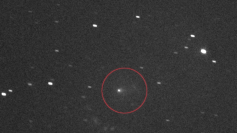According to experts, the newest large piece of Chinese space trash will return to Earth at the end of the month.
The item in question is the Long March 5B rocket's roughly 25-ton (22.5 metric tons) core stage, which was launched on Sunday, July 24, to orbit the second module of China's Tiangong space station, which is still under construction.
The Center for Orbital Reentry and Debris Studies (CORDS) at The Aerospace Corporation predicts that the rocket body will remain in orbit for about a week. They have examined tracking information amassed by the US. According to the Space Force's Space Surveillance Network, the rocket body will reenter Earth's atmosphere at about 3:30 a.m. EDT (0730 GMT) on July 31, plus or minus 22 hours.
With time, that forecast will be adjusted and updated. Where the Chinese rocket will touch down cannot yet be predicted, according to CORDS experts. However, reentry will take place somewhere between 41 degrees north and 41 degrees south latitude based on its orbit. And not all objects will be destroyed by air on Earth.
The Aerospace Corporation explained the approaching rocket fall in an explainer, stating "the general rule of thumb is that 20-40 percent of the mass of a large object will reach the ground, but the exact number depends on the design of the object." In this situation, we would anticipate five to nine tons (5.5 to 9.9 metric tons).
Most orbital-class rocket core stages are designed to land safely in the sea or over sparsely populated areas of land - or to make powered, vertical landings to enable reuse, as SpaceX's Falcon 9 and Falcon Heavy first stages do. However, the Long March 5B core enters orbit with its payload, setting up an uncontrolled crash back to Earth in the not-too-distant future due to atmospheric drag.
Such aimless dives were observed on the two prior Long March 5B missions. The rocket made its debut on May 5, 2020 (and has now completed three missions). A week or so later, a Long March 5B body crashed into the ocean off the west coast of Africa, possibly dumping some debris in the Ivory Coast. Ten days after Tiangong's Tianhe core module was launched in May 2021, the second Long March 5B reentered the atmosphere above the Indian Ocean.
No reported injuries were caused by any of these instances. However, exploration specialists have criticized China for allowing such space trash falls to happen because of the possibility of harm and damage to infrastructure on the ground.




